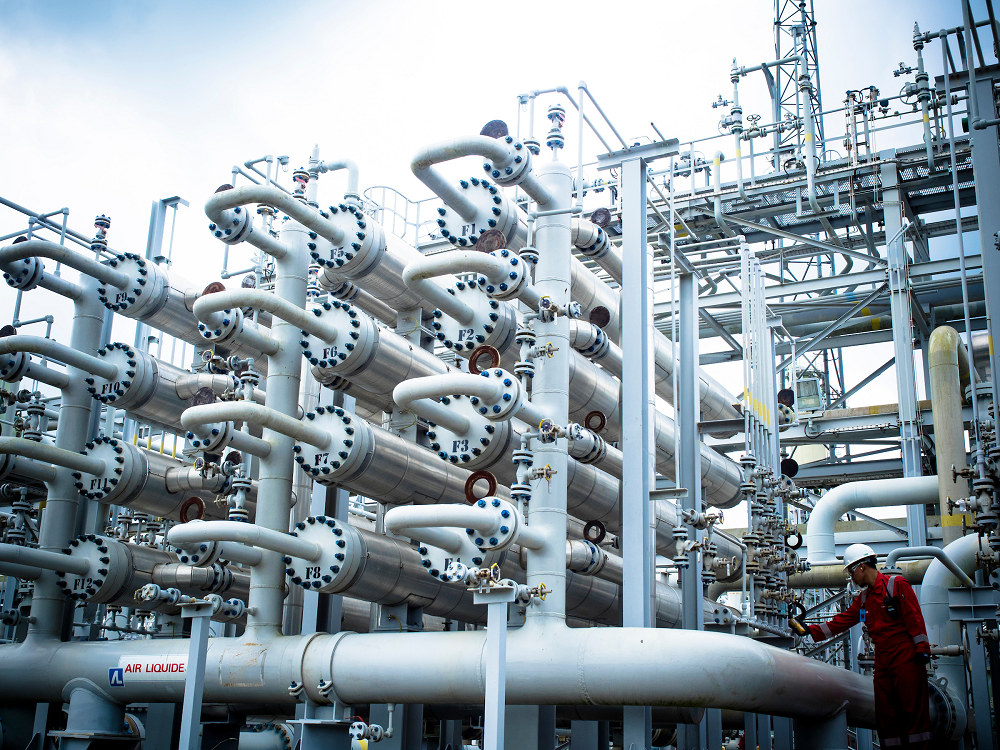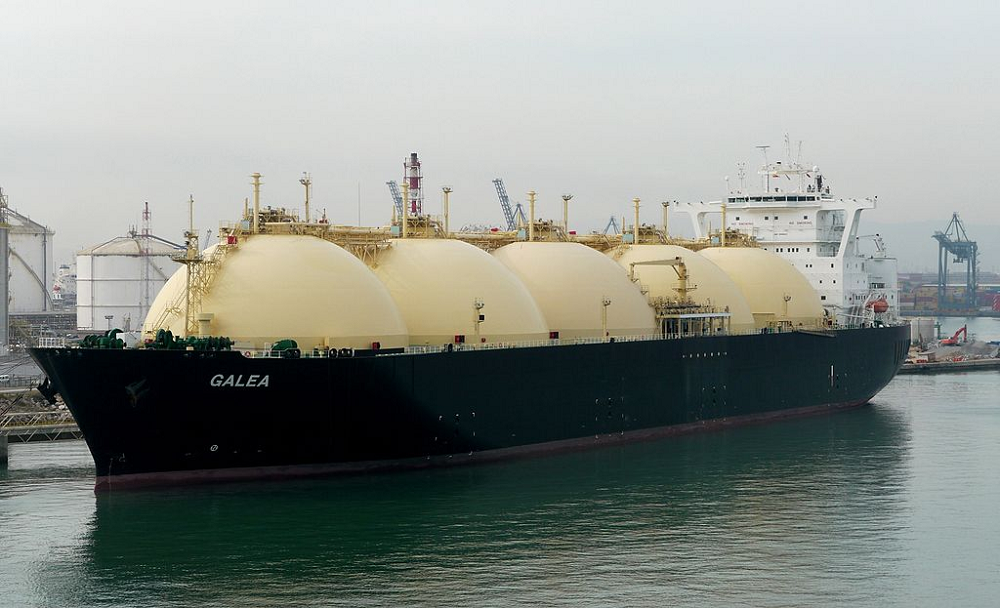
Natural gas is a highly-traded commodity that has become a key fuel in the global energy mix – meaning those countries that hold large reserves have an opportunity to generate national revenues from exports, while boosting their own energy security.
It is used mostly in heating and electricity generation, having grown in popularity over recent years as a cleaner-burning fossil fuel than coal, and a cheaper alternative to oil.
According to the International Energy Agency (IEA), natural gas has accounted for almost one-third of overall energy-demand growth over the past decade, more than any other fuel, and accounts for around 23% of the world’s primary energy demand.
Global production has been growing steadily since the 2008 financial crisis – boosted by the progress of shale fracking in the US – and totalled around four trillion cubic metres (tcm) in 2019.
The US and Russia are among the largest natural gas producing countries in the world.
In the context of the low-carbon energy transition, natural gas is often discussed as a “transitional fuel” that can bridge the gap between more carbon-intensive fossil fuels – coal and oil – and renewable technologies that are gathering momentum but not yet deployed at a scale that can meet overall energy demand.
Energy producers are looking at ways to couple gas-fired generation facilities with carbon capture and storage (CCS) technologies, as a way to mitigate the emissions it releases when burned.
A handful of countries dominate the world’s biggest reserves of natural gas, and here we profile the top five.
Which countries have the biggest natural gas reserves?
1. Russia – 38 trillion cubic metres
Russia is home to the world’s largest natural gas reserves, with a total proved resource of 38 tcm (1,341 trillion cubic feet) according to the BP Statistical Review of World Energy 2020.
That is equivalent to around 19% of the world’s total reserves.
The majority of Russia’s natural gas reserves are located in Siberia, with the Yamburg, Urengoy, and Medvezh’ye fields particularly productive.
State-backed company Gazprom owns around 71% of the country’s gas reserves – and roughly 16% of the global total.
2. Iran – 32 trillion cubic metres
Iran accounts for around 16% of the world’s share of natural gas resources, with an overall reserve of 32 tcm (1,131 trillion cubic feet).
Development of these vast reserves – most of which are located offshore – has been hindered by international economic sanctions placed on the country, notably by the US in response to geopolitical tensions and Iran’s nuclear development programme.
Iran shares ownership of the world’s largest gasfield – South Pars/North Dome – with neighbouring Qatar. The field is located offshore in the Persian Gulf.
In 2019, the country produced 244 billion cubic metres (bcm) of natural gas – around 6% of the global total.
3. Qatar – 24.7 trillion cubic metres
Qatar has proven natural gas reserves of 24.7 tcm (872 trillion cubic feet), which is slightly more than 12% of the global total.
The majority of these reserves are located in the offshore North Field, which spans an area roughly the same size as the country itself and is the world’s largest single natural gas field.
Qatar is the world’s top producer of liquefied natural gas (LNG), and was the biggest LNG exporter in 2019, closely followed by Australia.
Natural gas operations in the country are largely controlled by state-run company Qatar Petroleum.

4. Turkmenistan – 19.5 trillion cubic metres
The Central Asian country of Turkmenistan has the fourth-largest natural gas reserves in the world, totalling 19.5 tcm (688 trillion cubic feet).
That is equivalent to a 9.8% share of the of the overall global resource.
Most of the natural gas reserves in Turkmenistan are located in large fields in the Amu Darya basin in the southeast, the Murgab Basin in the south, and the South Caspian basin in the western part of the country.
Development of these abundant resources has been hindered by a lack of investment in infrastructure and export capabilities. Production in the country totalled 63.2 bcm in 2019, which was just 1.6% of the global total.
5. United States – 12.9 trillion cubic metres
The US holds a 6.5% share of global natural gas reserves, with proven resources of 12.9 tcm (455 trillion cubic feet).
Production of the fuel has skyrocketed over the past decade, driven by the shale fracking revolution that has also helped it to become the world’s largest oil-producing nation.
In 2019, the US produced almost a quarter of the world’s natural gas supply – around 921 bcm – which was more than any other country.
The majority of US natural gas is produced onshore via horizontal drilling and hydraulic fracturing techniques. Texas and Pennsylvania are the two highest-producing regions in the country.





